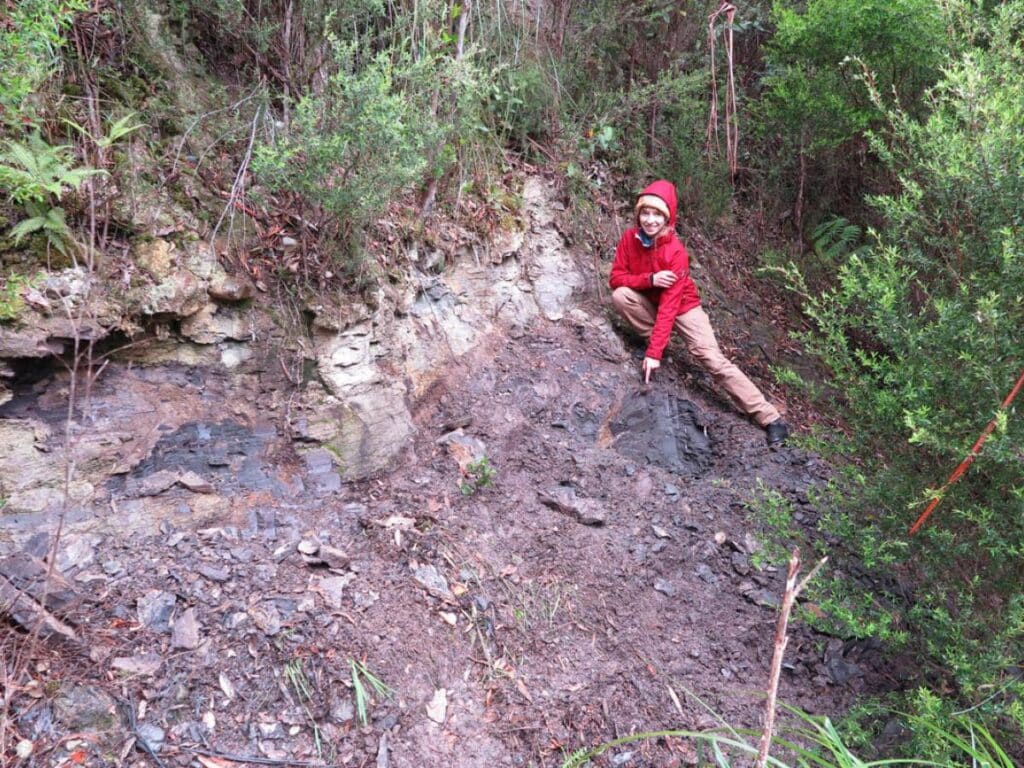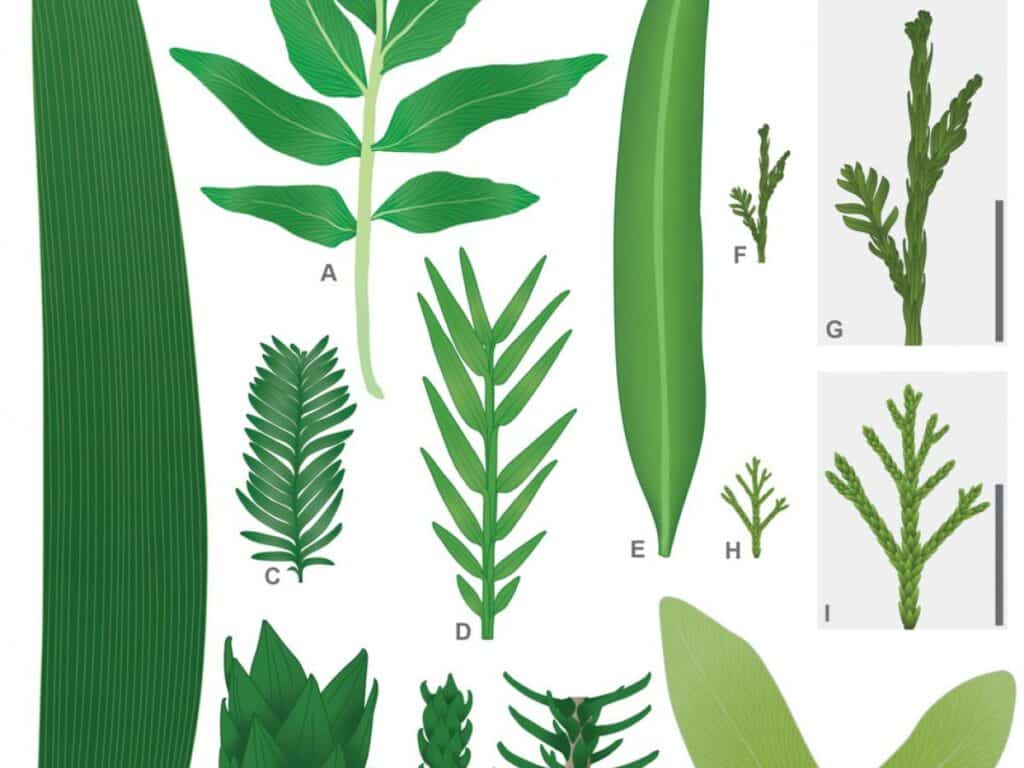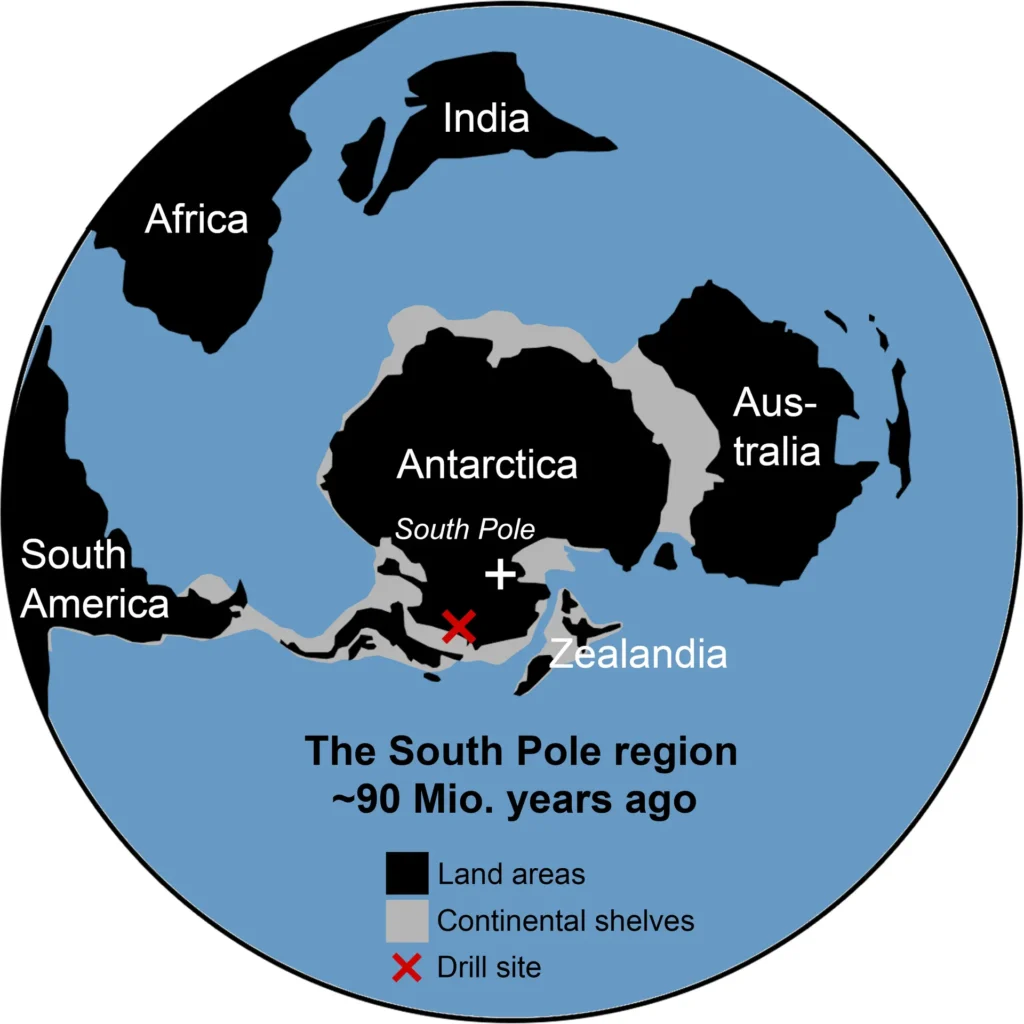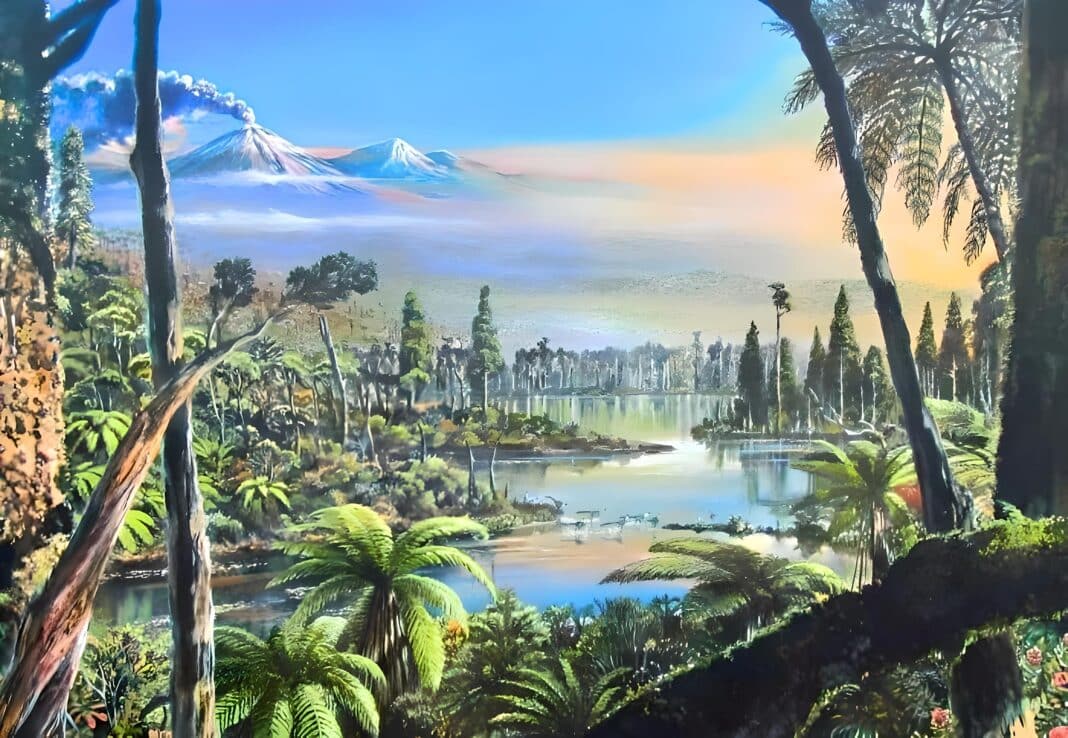New remains from a 53-million-year-old polar forest have been unearthed in Tasmania. They reveal the origins of 12 rainforest plants once part of the southern polar region—an area that once blanketed modern-day Antarctica, Australia, New Zealand, and (parts) of South America.
The stunning find, made by University of Adelaide PhD graduate Dr Miriam Slodownik, sheds new light on the extent and evolution of southern rainforests during the early Eocene epoch—the last period of extreme greenhouse conditions on Earth.
“This discovery offers rare insights into a time when global temperatures were much higher than today,” said Dr Slodownik. “Tasmania was much closer to the South Pole, but the warm global climate allowed lush forests to thrive in these regions.”

According to Dr Slodownik, several newly discovered fern and tree species have ancestral links to flora in regions across Australia, New Zealand, Indonesia, and South America.
“The most spectacular fossils are relatives of the Kauri [Agathis], Bunja [Araucaria bidwillii] and Wollemi [Wollemia nobilis] pines that give clues about the evolution of these iconic Australian trees,” Dr Slodownik said.
Published in the American Journey of Botany, The non-flowering plants of a near-polar forest in East Gondwana, Tasmania, Australia, during the Early Eocene Climatic Optimum, the research reveals how plant species flourished in the giant “polar forest” – when global surface temperatures averaged 80 degrees Fahrenheit (or 27 degrees Celsius).
Wood Central understands that the fossils date back to the Early Eocene Climatic Optimum (53 million and 49 million years ago), several million years before Australia’s and Antarctica’s breakup (45 million and 35 million years ago).
Unearthed near Tasmania’s Macquarie Harbor, the fossils suggest tropical plants from the polar forest travelled north as the continents drifted apart, seeding native rainforests that still exist today.

More than 400 new fossils were excavated and prepared at the Palaeobotany Laboratory at the University of Adelaide – with ultraviolet photography and microscopic analyses revealing the intricate details of the leaf and cellular structures. “These insights have been pivotal in understanding the relationship of these ancient plants to their modern counterparts,” per a statement from the University of Adelaide.
Working in collaboration with the Tasmanian Aboriginal Centre, researchers also identified ferns, a cycad, and two new but extinct tree species, Podocarpus paralungatikensis and Araucaria timkarikensis: “The new fossil species were named in palawa kani, the Aboriginal language of Tasmania, to recognise the land’s original owners and longtime occupants,” the university said: “Paralungatik, is the original name of Macquarie Harbour, and Timkarik is the name of the Strahan area (where the fossils were found).”
“These fossils highlight the historical connections between Antarctica, South America, and Australia, which were once part of the ancient supercontinent Gondwana,” said Dr Slodownik. “The analyses showed how these plants adapted and thrived across the Southern Hemisphere in warm, ice-free conditions, even with the extreme seasonal changes near the polar circle.”

As the Earth cooled and the polar regions became covered in glaciers, the landmass that is now Australia drifted northward. It carried these polar plants towards the equator, where they evolved into the species that populate modern-day Australia and neighbouring landmasses.
“This study revealed the amazing diversity of Tasmania’s fossilised forest. These plants tell the story of big climate changes and the shifting tectonic plates over millions of years,” Dr Slodownik said. “Through this research, my team and I have continued the University of Adelaide’s history of being at the forefront of palaeobotanical research, contributing crucial insights into plant evolution and the dynamics of our planet in deep time.”
- To learn more about fossilised forests, including the oldest known example of a forest (390 million years old) and its role in climate change, click here for research published in July 2024.






